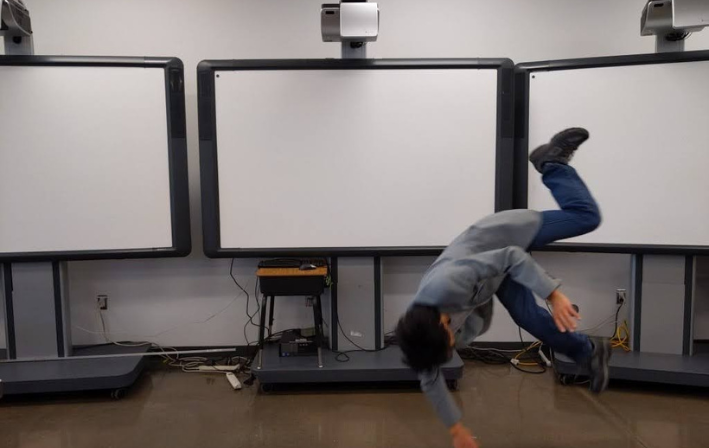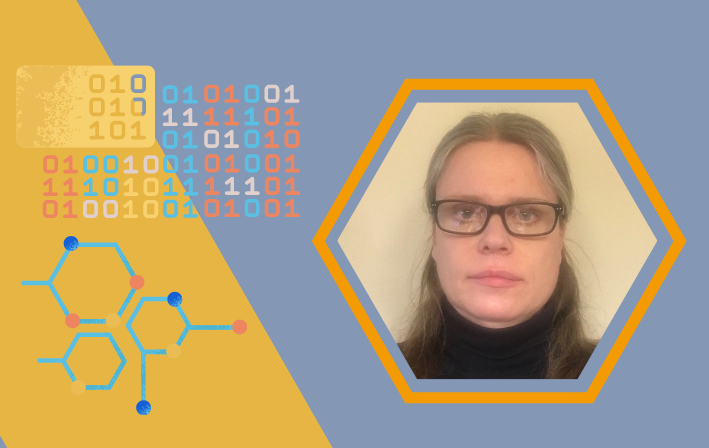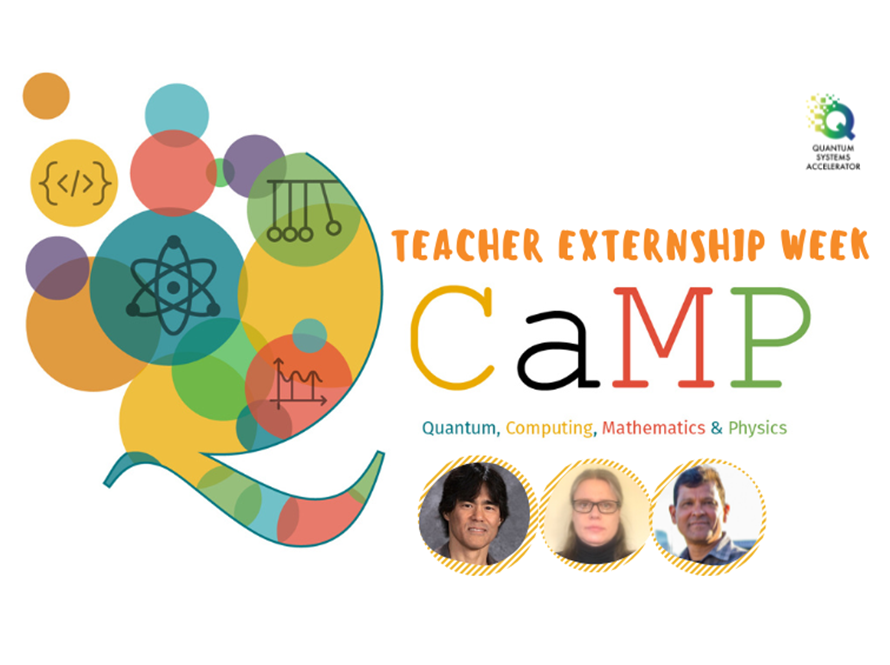The Quantum Systems Accelerator (QSA), a National QIS Research Center funded by the U.S. Department of Energy, dedicates special efforts to quantum education and outreach in this fast-growing, developing field where the number of unfulfilled job vacancies increases every year. QSA’s outreach is especially pioneering at the high-school level, which traditionally has not been regarded as an entry point to QIS.
In 2022, QSA built on the success of its first pilot camp for high school students by organizing the Quantum Computing, Mathematics, and Physics (QCaMP) summer camp in collaboration with the non-profit Computer Science Alliance and the Institute of Electrical and Electronics Engineers (IEEE). QCaMP ran two week-long cohorts for high school teachers and students in economically and technologically disadvantaged communities in New Mexico and California. A total of 20 teachers participated during QCaMP’s first-week cohort and 32 students for the second, with most attendees being introduced to QIS for the first time. Quantum researchers at QSA institutions, including Lawrence Berkeley National Laboratory (Berkeley Lab), Sandia National Laboratories, the University of New Mexico, and collaborators at New Mexico State University, curated and designed the program without formal prerequisites such as advanced math or physics. In addition to hands-on experimental demonstrations, the teachers’ week also included discussion sessions and resources for introducing QIS concepts to students, which could easily be incorporated into existing lesson plans. Career talks and question-and-answer sessions complemented the student program.
Three science teachers reflected on their experiences at QCaMP and how they anticipate new generations can start to think “quantumly.”

Grade levels: 9-12
Subject: Physics
Early College Academy / Career Enrichment Center
Albuquerque, New Mexico
Ray Tokuda has taught physics for over three decades and is passionate about learning and inspiring others to learn about science and life in novel ways. For example, Tokuda regularly pulls out tablecloths from under plates, cutlery, and glassware to demonstrate fundamental concepts in his classroom. Proud of his Japanese American heritage, he’s also a recognized senior practitioner of Chinese martial arts and chief instructor at Albuquerque’s Chinese Cultural Center. As a result, he often incorporates different martial arts demonstrations in his physics classes, such as a judo hip throw, to advance the student’s understanding of the center of mass and torque.
Continuing to stay on the leading edge of experimentation while striving for personal and professional growth is essential for Tokuda. For instance, he completed an accelerated freefall skydiving course because it was discussed in his classroom textbook. So, as new frontiers are being explored in QIS, he has kept up with several quantum computing colloquia at the University of New Mexico.
“It’s like the wild west where no one knows what’s on the horizon, but it’s a field where an interested student will have tremendous opportunities. As a physics teacher, you are doing your students a disservice if you don’t mention this area in your class,” said Tokuda.
Tokuda believes that students and teachers must be exposed to the fundamentals of quantum physics early on, even if everything isn’t clear. For example, before starting QCaMP, Tokuda wasn’t clear about how you get any useful computation out of entangled qubits.
“The most unexpected thing I learned was that the secret sauce to making quantum algorithms is still a mystery. We are still at the very early stages of the field, and our students will have a brave new world to explore if they get into it,” said Tokuda.
Inspired by the online modules at QCaMP, Tokuda plans for a quantum computing unit at the end of his high school class.
“I think it would be exciting for kids to see how the basic physics in their textbook gets used in cutting-edge quantum computing. For example, the superconducting quantum computer we saw had resonance, electric circuits, and Josephson junctions. These could all be basic components of any introductory physics class that would otherwise usually have pretty pedestrian applications,” explained Tokuda.

Grade levels: 9-12
Subjects: Intro to Web Programming and Computer Science
Capital High School
Santa Fe, New Mexico
Barbara Teterycz is a bilingual teacher with Polish roots specializing in technology education and computer science at Capital High School. She is interested in exploring open-source, object-oriented programming languages to help prepare students for the professional world and for competing in various recognized national, state, and local competitions and STEM challenges. Teterycz has been recognized with several awards, including the 2021 Teaching Excellence Award issued by the Computer Science Teachers Association and the 2022 Excellence in Student Achievement Award issued by the New Mexico School/Santa Fe Public Schools Board of Education. Teterycz is always interested in the different ways to improve computing education in underserved communities.
“My goal is to form a robust educational computing sciences pathway to better prepare our students for college and career. However, quantum computing can be offered as an extracurricular program after school. I am impressed with the incredible speed of processing data and complicated algorithms that quantum computers offer compared to classical computing,” said Teterycz.
According to Teterycz, one of QCaMP’s most demanding training components is related to its interdisciplinarity.
“Quantum computing combines physics, chemistry, and computer science, which to me was rather hard to comprehend fully. For example, what surprised me the most were the two states of a photon which we could observe while using a polarization filter. This is one method to fabricate a quantum bit or qubit. In addition to photons, other materials can be used to fabricate a qubit, for example, a Barium atom.”
Teterycz believes that teachers should consider starting initiatives related to quantum computing and QIS, especially with the growing access to cloud-based quantum platforms from industry. In addition, physics teachers might start incorporating this subject matter early into their curriculum.
“For next time, I would try to encourage and convince more of our high school science teachers to join me. We can form a strong team and teach interested students about quantum physics and computing in an after-school program,” concluded Teterycz.

Grade levels: 9-12
Subjects: Physics, Chemistry, Robotics
Cathedral High School
Los Angeles, California
Dave Galaz believes that timing is everything and remaining up-to-date is essential in his work, so when the opportunity to get involved at QCaMP presented itself, he didn’t hesitate. Galaz is the science department chair at Cathedral High School. He also teaches robotics and serves as the head coach for the school’s robotics team.
Galaz reflected on the importance of being exposed to QIS and the role of engineering in cutting-edge scientific developments. Galaz has been advising many of his students to consider engineering a potential career path, but after QCaMP, he also “will now encourage students to consider studying physics in college.”
To better understand the nuances of powerful quantum processing, the field’s interdisciplinary nature, and how students might consider different career paths, Galaz advises other teachers to enroll in quantum workshops and consider physics professional development courses sooner than later.
Building a Quantum-Ready Workforce
As a National QIS Research Center composed of 15 top institutions in the United States and Canada, QSA’s mission includes training and inspiring a broad quantum-ready workforce that can advance the field’s future. A healthy quantum ecosystem requires a vast workforce with various backgrounds, disciplines, and perspectives collaborating far and wide in nurturing research environments. Indeed, providing QIS exposure to new communities can open up breakthrough opportunities and reinvigorate the skills pipeline to enter the field. More importantly, with educational programs like QCaMP, QSA is jumpstarting early pathways that would have otherwise not been considered.
“Providing high-school teachers and students with exposure to this exciting field and the right learning resources will accelerate building a large quantum-ready workforce. The feedback from this year’s teacher and student participants was invaluable to us at the QSA as we look to improve the program for future iterations and generations,” said Sandia’s Megan Ivory, who serves as QSA’s program manager for QCaMP.
“We look forward to continuing to partner with and plug into existing professional development programs for teachers like we did with the Computer Science Alliance for QCaMP. These educational collaborations create a sustainable track for QIS workforce efforts,” concluded Sandia’s Jake Douglass, QSA operations deputy director and workforce development lead.
To learn more about QCaMP, visit the program page or contact [email protected].
Founded in 1931 on the belief that the biggest scientific challenges are best addressed by teams, Lawrence Berkeley National Laboratory and its scientists have been recognized with 16 Nobel Prizes. Today, Berkeley Lab researchers develop sustainable energy and environmental solutions, create useful new materials, advance the frontiers of computing, and probe the mysteries of life, matter, and the universe. Scientists from around the world rely on the Lab’s facilities for their own discovery science. Berkeley Lab is a multiprogram national laboratory, managed by the University of California for the U.S. Department of Energy’s Office of Science. DOE’s Office of Science is the single largest supporter of basic research in the physical sciences in the United States, and is working to address some of the most pressing challenges of our time. For more information, please visit energy.gov/science.
Sandia National Laboratories is a multimission laboratory operated by National Technology and Engineering Solutions of Sandia LLC, a wholly owned subsidiary of Honeywell International Inc., for the U.S. Department of Energy’s National Nuclear Security Administration. Sandia Labs has major research and development responsibilities in nuclear deterrence, global security, defense, energy technologies and economic competitiveness, with main facilities in Albuquerque, New Mexico, and Livermore, California.
The Quantum Systems Accelerator (QSA) is one of the five National Quantum Information Science Research Centers funded by the U.S. Department of Energy Office of Science. Led by Lawrence Berkeley National Laboratory (Berkeley Lab) and with Sandia National Laboratories as lead partner, QSA will catalyze national leadership in quantum information science to co-design the algorithms, quantum devices, and engineering solutions needed to deliver certified quantum advantage in scientific applications. QSA brings together dozens of scientists who are pioneers of many of today’s unique quantum engineering and fabrication capabilities. In addition to industry and academic partners across the world, 15 institutions are part of QSA: Lawrence Berkeley National Laboratory, Sandia National Laboratories, University of Colorado at Boulder, MIT Lincoln Laboratory, Caltech, Duke University, Harvard University, Massachusetts Institute of Technology, Tufts University, UC Berkeley, University of Maryland, University of New Mexico, University of Southern California, UT Austin, and Canada’s Université de Sherbrooke. For more information, please visit https://quantumsystemsaccelerator.org/
